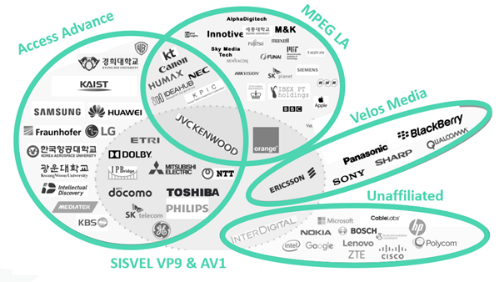As a Founder and Managing Director, Bikram plays a key role in the day to day operations and formulating strategies for smooth execution of research assignments. Bikram is also responsible for client acquisition and client engagements in Asia pacific region. Bikram helps global technology companies monetize their IP assets through automated tools and helps them generate more value out of their IP. He has the expertise of assisting clients on a wide range of technologies such as Semiconductors (circuits and processes), Wireless Technologies, Memory Devices, Cloud Computing, and Consumer Electronics.
Bikram has been advising several Global 500 clients in effective patent portfolio optimization and competitive benchmarking analysis to help them understand their position in the industry. Bikram has extensive experience in assisting clients on high stake US, Japanese and Chinese patent litigation cases. Recently, Bikram has been actively involved in advising clients on new product development strategies and technology Landscape studies.
Silent Hero of Streaming – The Power of Codecs
Imagine a world without codecs, where every video clip, song, and image gobbled up your device’s storage, making online streaming a tedious waiting game, and video calls a distant dream. In this digital universe, we’d be drowning in data. But Codecs are here to transform the digital realm, silently working their magic behind the scenes.
What is a Codec? How are they important in the media streaming industry?
Codecs, short for compressor/decompressor, play a pivotal role in managing the immense amount of data within video files. These files contain diverse data, including images, audio, video, and metadata. Codecs step in to reduce the storage space required for these files. In storage, a video codec minimizes file size by consolidating similar data, reducing color variations, and lowering resolution. When you open the video for playback or editing, the same codec decompresses the data. In the ever-evolving world of digital media, audio-video codec standards play a pivotal role in enabling seamless transmission and playback of multimedia content. These standards are the result of extensive R&D efforts by technology companies that often invest substantial resources in creating efficient and high-quality codecs. However, the development and use of such codecs come with complex legal and ethical considerations, particularly in the realm of Intellectual Property Rights (IPR).
In this blog, we’ll decode the secrets of codecs, revealing how they revolutionize the way we consume and share media, all while staying incognito to the end-user. It is an interesting world of codecs, where technology meets efficiency, and where bytes transform into breathtaking experiences.
How Codecs work
A codec, short for compressor/decompressor, is a tool used in video files to reduce their storage size by compressing data related to images, audio, video, and metadata. This compression minimizes file size by merging similar data, reducing colors, and lowering resolution. There are various types of codecs, including lossy (e.g., MP3, AAC), lossless (e.g., FLAC, ALAC) audio codecs, and video codecs (e.g., H.264, H.265, VP9, AV1). Each codec has unique characteristics, such as compression efficiency and audio/video quality. Container formats like MKV, MP4, and AVI are used to hold audio and video data compressed with specific codecs. The choice of codec and container depends on factors like quality, compression, and compatibility with playback devices and platforms.
Video codecs are essential tools for compressing video files and enabling efficient delivery over the internet. They are responsible for the ease of conducting online meetings and streaming content, even with limited bandwidth. Netflix, for example, relies on codecs to stream a vast amount of content to various devices. These codecs play a crucial role in our ability to enjoy seamless online experiences like binge-watching shows and conducting business meetings.
Audio codecs are abbreviations like WAV, FLAC, and MP3 that you often experience when streaming music. These acronyms represent different audio compression methods. Codecs, short for “coder/decoder,” are tools that compress audio files for transmission and decompress them for playback. They play a vital role in your listening experience. The quality of an audio file depends on sample rate, sample depth, and bit rate, which are used during the conversion of analogue audio to digital. Higher values for these variables result in better audio quality. In essence, audio codecs determine how your music sounds when streaming, making them crucial for your overall listening experience.

Courtesy: Tech Target
Types of Codecs
There are various types of audio-visual codecs, each designed to compress and decompress audio and video data in different ways. Here are some common types of audio-visual codecs along with examples:
-
Lossy Audio Codecs:
- MP3 (MPEG-1 Audio Layer 3): MP3 is one of the most popular audio codecs, known for its high compression ratio. It is widely used for music and audio streaming.
- AAC (Advanced Audio Coding): AAC is known for its improved sound quality over MP3 at similar bitrates. It is commonly used by Apple devices and services like iTunes.
- Opus: Opus is an open-source codec that offers excellent sound quality and low latency. It’s often used for real-time communication applications like VoIP and video conferencing.
-
Lossless Audio Codecs:
- FLAC (Free Lossless Audio Codec): FLAC is a popular lossless audio codec known for preserving audio quality while reducing file size. It’s commonly used for archiving music.
- ALAC (Apple Lossless Audio Codec): ALAC is Apple’s equivalent of FLAC, offering lossless compression for high-quality audio
-
Video Codecs:
- 264 (Advanced Video Coding): H.264 is a widely used video codec known for its efficient compression and good video quality. It’s used for streaming, video conferencing, and video recording.
- 265 (High Efficiency Video Coding or HEVC): H.265 is an advancement over H.264, offering even better compression efficiency. It’s commonly used for 4K video streaming.
- VP9: Developed by Google, it is an open-source video codec, used for web video streaming and offers good compression with high-quality video.
- AV1: AV1 is another open-source video codec designed to provide high compression efficiency. It’s gaining popularity for web video streaming due to its royalty-free nature.
-
Container Formats:
- MKV (Matroska): MKV is a popular container format that can hold audio, video, and subtitles using various codecs. It’s often used for high-definition video.
- MP4 (MPEG-4 Part 14): MP4 is a widely supported container format that can contain audio and video compressed with various codecs, including H.264 and H.265.
- AVI (Audio Video Interleave): AVI is an older container format used for both audio and video, often with codecs like DivX or Xvid.
These are just a few examples of audio and video codecs and the container formats they are commonly associated with. The choice of codec and container depends on factors like desired quality, compression efficiency, and compatibility with playback devices and streaming platforms.
Patent Landscape in Codecs
Practically all codecs rely on patented technology, and some of the key patents might overlap with those necessary for AVC/H.264. Consequently, users should recognize that using these technologies developed by others likely necessitates obtaining a license and paying relevant royalties.
Video coder development in the space of MPEG, H.264, and HEVC standards is a dynamic field where numerous companies are actively engaged. They bring their designs to life by employing a blend of openly accessible algorithms alongside proprietary methods and technologies, often safeguarded by patents.
For insights into these patents and their interconnections, MPEG-LA serves as a valuable resource. MPEG LA is open to the possibility of providing additional licenses that simplify access to these rights for the market. They offer licenses for patent pools that encompass essential patents necessary for utilizing standards like MPEG-2, MPEG-4 Visual (Part 2), IEEE 1394, VC-1, ATSC, and AVC/H.264. This approach offers an alternative to engaging in separate negotiations with individual patent holders, streamlining the process for users.
In the field of video codec development and patent pools related to MPEG, H.264 (AVC), and HEVC standards, several leading players, patent pools, and organizations have accomplished noteworthy feat. Besides MPEG-LA and HEVC Advance; Velos Media is another notable patent pool that licenses patents related to video codecs, including HEVC/H.265 and AVC/H.264. Sisvel is a licensing company that manages patent portfolios related to various technologies, including video coding. Dolby Laboratories is a well-known player in the audio and video technology space. Besides patent pools and licensing organizations, individual companies like Apple, Qualcomm, Samsung, and Huawei may own patents related to video coding standards.
Benefits and Gaps in IPR space in CODECs
The next-generation video codec, Versatile Video Coding (VVC) or H.266, boasts significant technical advancements compared to its predecessors, H.265 (HEVC) and H.264 (AVC), as well as competitors like AV1 and VP9. VVC, finalized in October 2020, achieves the same perceptual quality as prior codecs but with up to a 50% improvement in video coding efficiency. It supports ultra-high-definition formats like 4K and 8K and high dynamic range, and its design is versatile, catering to a range of new applications.

Image Source: IAM Media
Patent Landscape of VVC:
However, the adoption of VVC may be influenced by patent issues. There are thousands of Standard-Essential Patents (SEPs) related to VVC, and many patent holders may seek royalties for their use. To address this, the Media Coding Industry Forum (MC-IF) was formed in 2018 to foster a single, dominant patent pool for VVC. While some progress has been made, both MPEG-LA and Access Advance (formerly HEVC Advance) intend to launch separate patent pools for VVC, potentially leading to a fragmented licensing landscape. Despite this fragmentation, a licensing regime with broad industry support remains possible, as video codecs have historically launched with multiple patent pools. For example, H.264 had separate pools from MPEG-LA and Via Licensing. However, the licensing ecosystem has become more complex with HEVC, with multiple pools in operation.
In selecting a VVC (Versatile Video Coding) patent pool to join, both Standard-Essential Patent (SEP) owners and implementers should assess the strength of each other’s SEP portfolios. However, this task is complicated by the lack of complete information on VVC SEPs. As of February 2021, just 23 companies had filed declarations of VVC-essential patents with ITU-T, less than half of MC-IF’s membership.
Identifying VVC Technology Leaders:
To identify the technology leaders in the VVC landscape, one can analyze their involvement in the development of the VVC standard. The Joint Video Experts Team (JVET) operates on a contribution-based model, where members submit technical proposals for approval. By examining approved VVC contributions, it becomes possible to gauge a company’s share and influence in VVC development. Currently, Qualcomm leads the list of VVC contributors, followed by companies such as Huawei, Bytedance, Sharp, and MediaTek. These contributions signify their significant roles in shaping the VVC standard and the direction of the technology’s advancement.
Conclusion
Licensing and patent challenges surrounding A/V codecs create hurdles for developers, requiring adherence to proprietary rules and substantial financial resources. This makes it difficult, if not impossible, to offer access to content encoded in these formats, despite their technical feasibility for Free Software implementation. Given the global rise in video consumption, efficient video coding and streaming technologies are vital for delivering high-quality videos at high speeds.
To foster innovation and ensure equitable access to these technologies and related patents, some licensing pools have emerged. Nevertheless, there’s a growing need to refine how Fair, Reasonable, and Non-Discriminatory (FRAND) licensing is conducted within these pools, mainly due to notable discrepancies in royalty rates.
For those seeking guidance on patent search and analysis, Researchwire can conduct comprehensive patent and prior art search related to codec technologies. It can identify existing patents, their owners, and key details, allowing you to understand the patent landscape in this field. For companies or individuals with multiple codec-related patents. To assess your company’s SEP capabilities and eligibility or if you need to engage in a detailed review of your patent portfolio, get in touch with Researchwire for assistance in managing your patent portfolio. This includes tracking expiration dates, assessing the value of your patents, and making decisions regarding licensing or enforcement. Additionally, services related to identifying licensing opportunities, developing an IPR strategy and legal compliance on codec-related innovations are also managed by Researchwire.
About Us
An ISO 27001 certified, Researchwire is a specialized IP research and R&D support company. Works closely with IP & legal teams to provide patent portfolio services and all types of patent searches & patent drafting. It provides enterprises and R&D centres with insightful and effective solutions to address their technology development challenges and roadmap planning.



